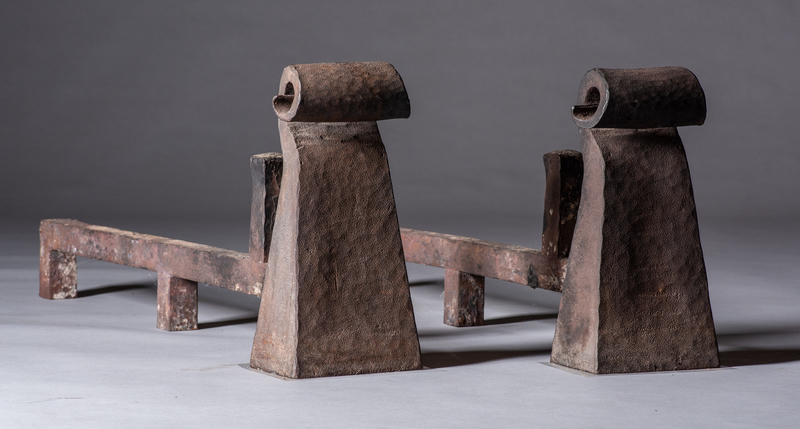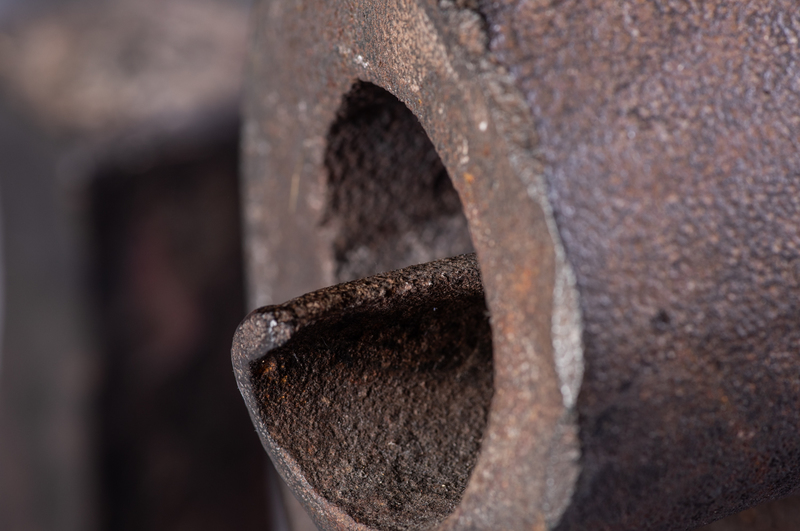Andirons (no. 100)
Item
Title
Andirons (no. 100)
Creator
Craftsman Workshops
Date
1911 (ca.)
Dimensions
13 x 7 x 33 inches
Medium
Wrought iron
Object No.
L2016.12a,b
Credit line
Courtesy of Leeds Art Foundation
Description
Gustav Stickley designed these andirons, probably in 1911, and applied for a patent to protect the design on January 29, 1912. They are featured in a print for the Craftsman Fireplace at the front of the 1912 Craftsman Furnishings for the Home catalog and appear later in the catalog. At $30.00 these were the most expensive andirons offered that year, but not the most expensive that Stickley sold. His circa 1905 catalog Craftsman Furnishings listed what would become model no. 88 at $40.00 and what would later be no. 348 at $36.00. During their production prices fell for these models and by 1909 they sold for $26.00 and $24.00 respectively.
It is not known precisely when these andirons were brought to Craftsman Farms, but the patent filing date’s proximity to when the Stickleys moved into the log house indicates that these were part of the initial furnishing program. Slight differences in this example and the published images of what would become model no. 100 further suggest that these are prototypes for the later production model. In both the patent drawing of 1912, and in the photographed example, the rear section of the andiron is a square bar that terminates in a single descending foot. By contrast, this pair’s horizontal bar has two descending feet and an upright bar near the andirons’ front. As the design patent covers only the “pyramidal form from bottom to top and terminating in a scroll at the upper end,” and the method of attachment between the vertical and horizontal members, it may well be that Stickley was working out the details of the whole design in this early phase.
A second set of these andirons—owned by Crab Tree Farm—are also original to the log house and confirm that these early pairs reflect a process of working out the design prior to the patent application. First, both pairs are shorter than the advertised height of 16 inches. Second, the rear portion of this pair differs significantly from both the patent drawing and the Leeds Foundation’s pair with a horizontal bar that extends backwards and a single descending support in the center.
It is not known precisely when these andirons were brought to Craftsman Farms, but the patent filing date’s proximity to when the Stickleys moved into the log house indicates that these were part of the initial furnishing program. Slight differences in this example and the published images of what would become model no. 100 further suggest that these are prototypes for the later production model. In both the patent drawing of 1912, and in the photographed example, the rear section of the andiron is a square bar that terminates in a single descending foot. By contrast, this pair’s horizontal bar has two descending feet and an upright bar near the andirons’ front. As the design patent covers only the “pyramidal form from bottom to top and terminating in a scroll at the upper end,” and the method of attachment between the vertical and horizontal members, it may well be that Stickley was working out the details of the whole design in this early phase.
A second set of these andirons—owned by Crab Tree Farm—are also original to the log house and confirm that these early pairs reflect a process of working out the design prior to the patent application. First, both pairs are shorter than the advertised height of 16 inches. Second, the rear portion of this pair differs significantly from both the patent drawing and the Leeds Foundation’s pair with a horizontal bar that extends backwards and a single descending support in the center.
Associated names
Gustav Stickley


